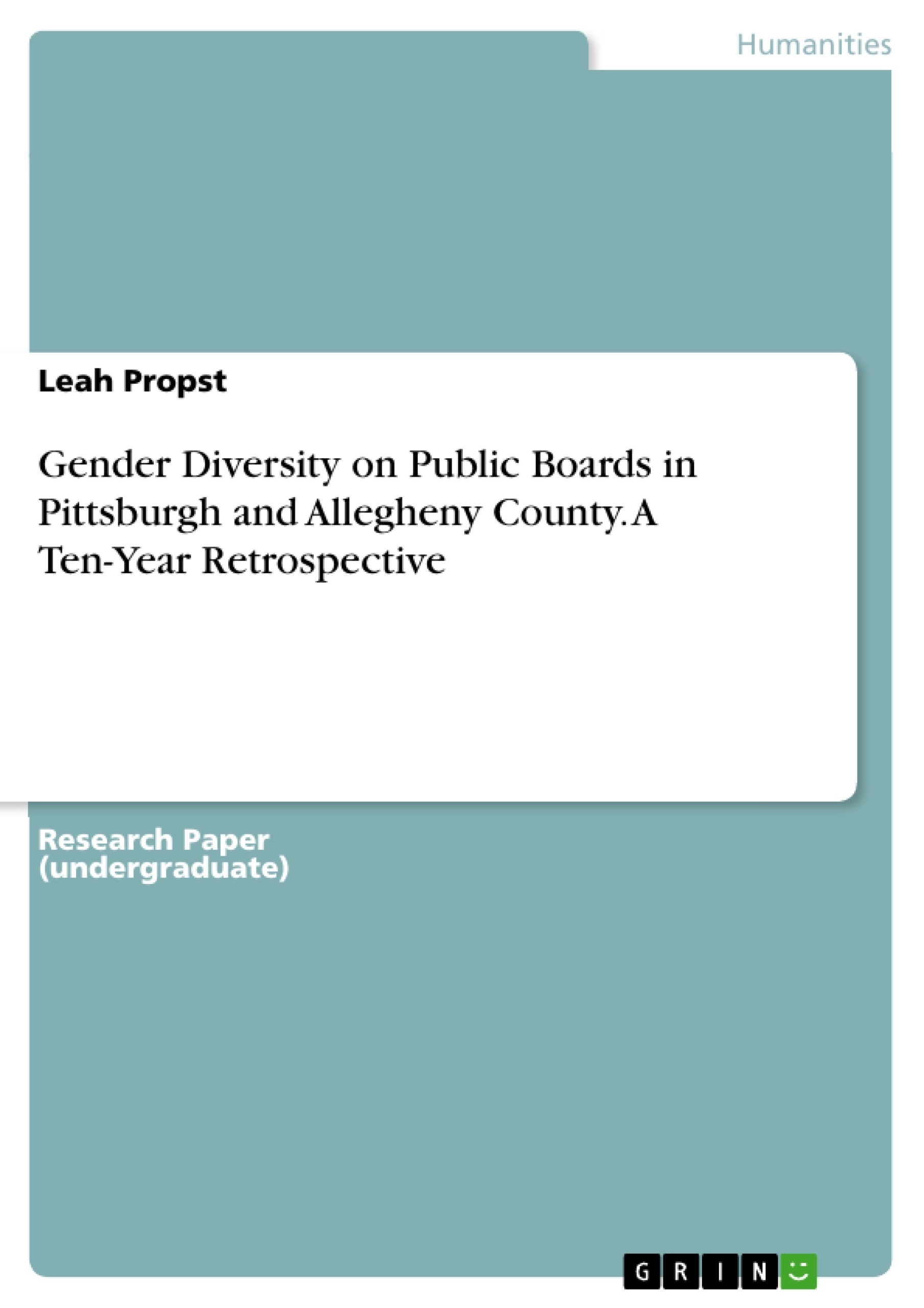In 2005, the Carnegie Mellon University (CMU) Heinz College of Public Policy published a study entitled “Recommendations for Implementing an Inclusive City and County Board Appointment Policy.” That study, based on previous research by the Pittsburgh Coro Center for Civic Leadership, had two objectives: to determine the demographics of boards, authorities, and commissions (BACs) in Pittsburgh and Allegheny County, and to issue recommendations on how to make appointments to BACs in the area more transparent and inclusive. As a result of the CMU study, the City of Pittsburgh passed Ordinance 35, a fair representation law that followed the study’s recommendations. Allegheny County operates under a similar law.
It has been ten years since the study and subsequent passage of Ordinance 35. It is the intention of the current research to examine the results of the CMU study, to determine the current demographics of Pittsburgh and Allegheny County BACs, to discover if the passage of Ordinance 35 has indeed improved the representation of women and minorities on BACs, and if not, to provide new recommendations for the City of Pittsburgh and Allegheny County to achieve representation in BACs that adequately represents the population of the region.
Carlow University has partnered with the YWCA of Greater Pittsburgh to examine the barriers that women and minorities face in being appointed as members of city and county boards in Pittsburgh and Allegheny County, and to make recommendations for the future in order to achieve representation of women and minorities on boards. Through an analysis of relevant literature and board member lists, as well as a survey distributed through the YWCA, the current research intends to provide a follow-up to the CMU study, examining ten years of progress, or lack thereof, and the future of representation of women and minorities on city and county boards.
Inhaltsverzeichnis (Table of Contents)
- Gender and Racial Diversity on City and County Boards: A Ten-Year Retrospective
- Abstract
- The Carnegie Mellon Study
- Ordinance 35¹
- Pittsburgh and Allegheny County Demographics and BAC Membership, 2006-2014
- BAC Membership in Pittsburgh under Ravenstahl.
- BAC Membership in Allegheny County under Onorato.………......
- BAC Membership in Pittsburgh under Peduto.....
- BAC Membership in Allegheny County under Fitzgerald..........\li>
- BAC Membership in Pittsburgh and Allegheny County Today
- Method
- Results
- Demographic Analysis
- Descriptive Analysis
- Bivariate Analysis.
- Discussion
- Limitations
- Recommendations.
- Advocacy Project.
- Board Training Program..
- Distribution of Literature
- Carlow's Contribution..
- Distribution of Literature
- Informative Presentation (Scholarship Day 2016)..
- Appendix A
- Appendix B
- Appendix C
- Appendix D
- Appendix E...
- Appendix F.
Zielsetzung und Themenschwerpunkte (Objectives and Key Themes)
This research aims to analyze the representation of women and minorities on city and county boards in Pittsburgh and Allegheny County, specifically examining the impact of Ordinance 35, a fair representation law passed in 2005 following a study by Carnegie Mellon University. The study will analyze demographic data of board members, identify barriers to representation, and provide recommendations for achieving greater diversity on these boards.
- Diversity on city and county boards in Pittsburgh and Allegheny County.
- Impact of Ordinance 35 on representation.
- Barriers to representation of women and minorities.
- Recommendations for improving diversity on boards.
- Ten-year retrospective analysis of progress.
Zusammenfassung der Kapitel (Chapter Summaries)
The research begins by outlining the background of the study, highlighting the Carnegie Mellon University study and Ordinance 35. It then delves into the demographics of Pittsburgh and Allegheny County boards from 2006 to 2014, examining membership trends under different administrations. The study explores the methodology used to collect and analyze data, including demographic analysis, descriptive analysis, and bivariate analysis. The final chapter presents a discussion of the findings, including limitations of the study and recommendations for achieving greater representation of women and minorities on city and county boards.
Schlüsselwörter (Keywords)
This research focuses on gender and racial diversity, board representation, city and county government, Pittsburgh and Allegheny County, Ordinance 35, Carnegie Mellon University, and recommendations for inclusive board appointments.
- Citation du texte
- B.A.- Political Science Leah Propst (Auteur), 2015, Gender Diversity on Public Boards in Pittsburgh and Allegheny County. A Ten-Year Retrospective, Munich, GRIN Verlag, https://www.grin.com/document/351118



